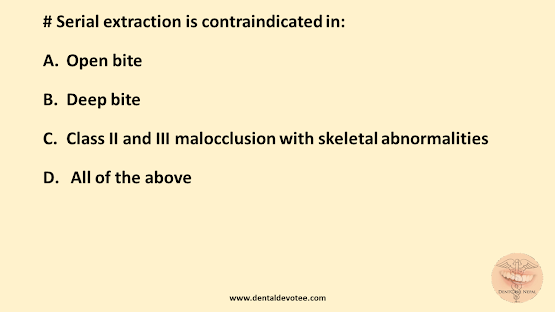# The glass ionomer cement is not recommended for:
A. Class V restoration
B. Class III restoration
C. Class IV restoration
D. None of the above
The correct answer is C. Class IV restoration
INDICATIONS OF GIC
- The restoration of caries lesions on the roots of patients with active caries is the primary indication for the use of a glass ionomer as a restorative material.
- Because of their limited strength and wear resistance, glass ionomers are indicated generally for the restoration of low-stress areas (not for typical Class I, II or IV restorations), where caries activity potential is of significant concern.
- In addition to being indicated for root-surface caries lesions in Class V locations, slot-like preparations in Class II or III cervical locations (not involving the proximal contact) may be restored with glass ionomers, if access permits.
- Cervical defects of idiopathic erosion or abrasion origin (or any combination) also may be indications for restoration with glass ionomers, if esthetic demands are not critical.
Reference: Sturdevant’s Art and Science of Operative Dentistry Second South Asia Edition 2019, Page No: 540







